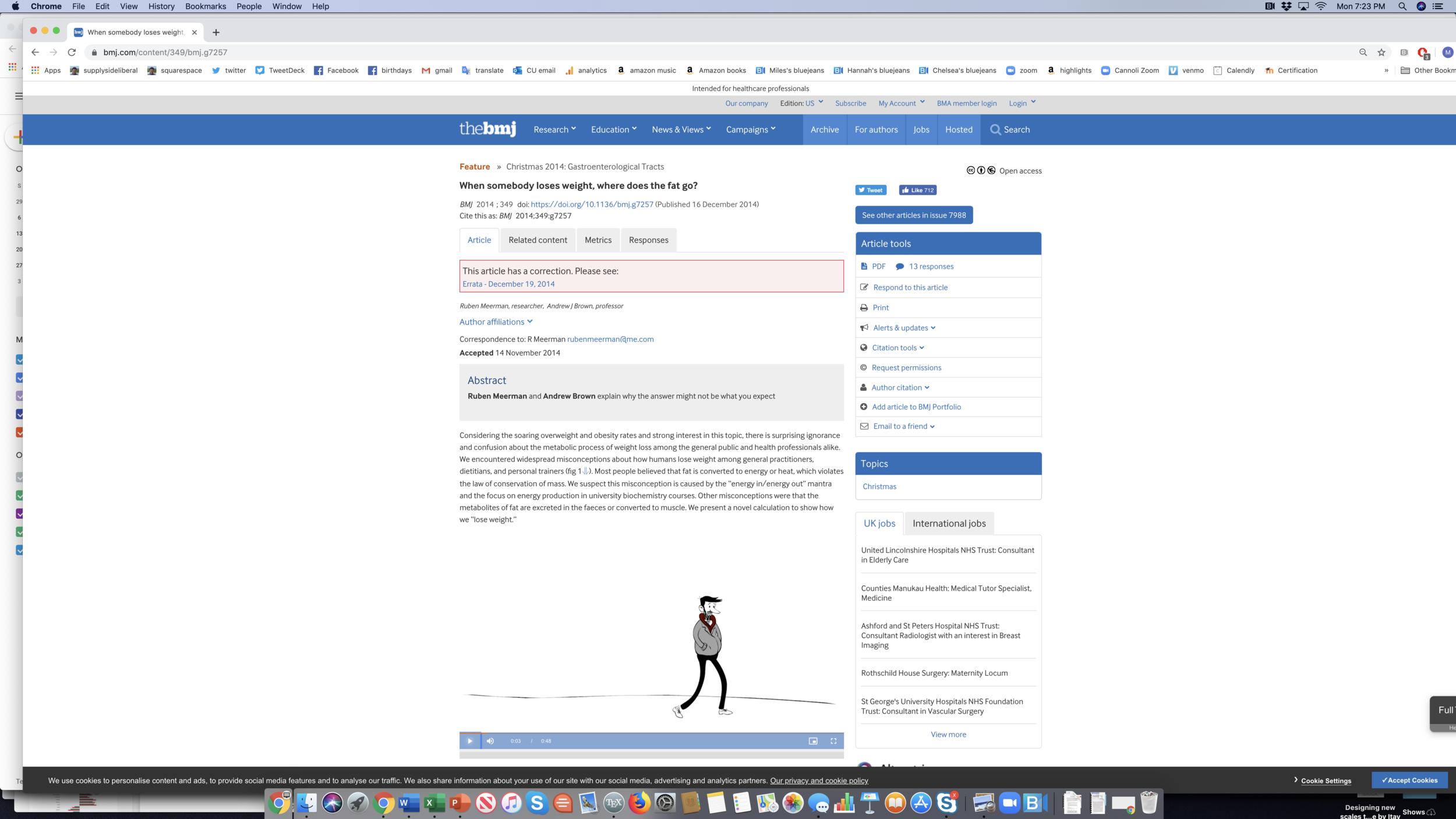How Weight Loss Happens: Mass In/Mass Out Revisited
Figure from the article above.
My personal knowledge of Weight Watchers is limited to a few scenes in “Mad Men,” when Betty Draper goes to Weight Watchers around 1970. But I am struck by the folly of participants feeling overjoyed that they had a good week if their weight went down half a pound since the previous weigh-in and feeling crushed if their weight went up half a pound since the previous weigh-in. In important measure out of morbid scientific curiosity, I weigh myself every day when I take a shower after work or after my daily walk on weekends or days I am working at home. The vagaries of my schedule—plus often having a short eating window in a day of as little as four hours—mean that I am sometimes weighing myself before eating, sometimes after, sometimes early in the day and sometimes late in the day. I can tell you that my weight can easily swing six pounds based on these variations. And trying to standardize things wouldn’t eliminate all of the variance.
The bottom line is that there is a huge mass-in/mass-out measurement error in any one weighing. (See “Mass In/Mass Out: A Satire of Calories In/Calories Out.”) In my experience, if I am trying to keep my weight even, it takes at least six weeks of weighing before I am confident whether I am staying even, losing weight or gaining weight in the long-run sense of burning fat or putting on fat on net.
Of course, if I am eating nothing, or almost nothing, in an extended fast, I am confident that I will be burning fat. (See “My Annual Anti-Cancer Fast” and “Increasing Returns to Duration in Fasting.”) During those extended fasts, I have been mystified by where the roughly .6 pounds per day of fat that I anticipate I will be losing. I am mystified no longer: Ruben Meerman and Andrew Brown, in the British Medical Journal article “When somebody loses weight, where does the fat go?” calculate that 10 kilograms of fat, combined with 19 kilograms of oxygen, departs the body as 19.6 kilograms of carbon dioxide exhaled and 9.4 kilograms of water. So losing weight by burning fat doesn’t require much in the way of excretion of solids; gases and liquids excreted pretty much do the job.
In “Mass In/Mass Out: A Satire of Calories In/Calories Out,” I make the point that mass in/mass out is every bit as much of a valid identity as calories in/calories out. But an identity does not make a complete theory of weight loss. One must also know how each term in an identity is regulated or otherwise determined. I maintain that in your natural environment, what you eat, and the schedule on which you eat it, will have a dramatic influence on the number of calories you end up consuming and the number of calories you end up burning. In particular, even a modest amount of sugar in your diet can make it very, very, very difficult to lose weight (or to keep from regaining weight that you have already lost), and eating all the time from when you wake to when you go to sleep can make it very difficult to lose weight or keep weight off, even if you have tiny meals and tiny snacks. You can easily experiment with this on yourself. For most people, the long-run expenditure of willpower needed to go off sugar and stay off sugar is a lot less than trying to cut back on calories in the long run while still eating substantial amounts of sugar. (See “Letting Go of Sugar” and “Live Your Life So You Don't Need Much Self-Control.”)
On the overall logic behind my views on weight loss, see “4 Propositions on Weight Loss” and for good ways to get started with serious weight loss, see “3 Achievable Resolutions for Weight Loss.”
I am eager to hear reports of people who try the approach I recommend and find it doesn’t work as well as people who try the approach I recommend and find that it doesn’t work. You can always tweet to me at https://twitter.com/mileskimball.
For annotated links to other posts on diet and health, see:

